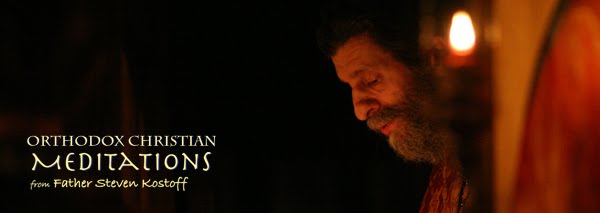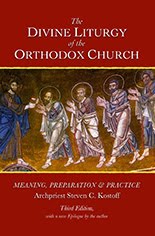
Revised 5/18/2010 - Link to the full article (in pdf format) by Fr Steven appears below...
Dear Parish Faithful and Friends in Christ,
Christ is Risen!
Pascha - The Thirty-Fourth Day
The Resurrection of Christ and the Rise of Christianity
Orthodox Christians believe that the New Testament Church and the Christian faith itself appeared at a particular point in history because the crucified Jesus of Nazareth was raised from the dead. The cause behind the emergence of the Church and the Christian Faith was not a crucified, dead and buried Jesus. Rather, that very crucified, dead and buried Jesus was revealed to be both Lord and Christ following His Resurrection “on the third day.” God vindicated the messianic claims of Jesus when He raised Jesus from the dead “according to the Scriptures.” Contemporary Orthodox Christians readily agree with the Apostle Paul’s insistence on the absolute centrality of the bodily resurrection of Christ as the foundation of Christian faith in Jesus: "If Christ is not raised, then your faith is in vain and our preaching is in vain.” (I COR. 15) Among all Christians this has been an overwhelming consensus since the initial witness of the apostles to the Risen Lord. But since the emergence of critical biblical scholarship within the last two centuries or so, we find Christian scholars and those influenced by them questioning, reinterpreting or openly denying the bodily resurrection of Jesus. This process may be more accelerated today, or simply more prominent and public in its expression. A vivid – if not lurid - expression of this skeptical approach to the resurrection claims of the first Christians can be found in the work of the New Testament scholar Dom Dominic Crossan. In his reconstruction of events, the body of the crucified Jesus was discarded in a shallow grave, there to suffer the further humiliation of becoming the food of ravenous dogs. That is also the kind of counter-claim that will attract a good deal of publicity. This threatens to undermine a consistent and long-standing witness among all Christians that points to the uniqueness of Jesus Christ among the great “religious founders” within human history. That uniqueness was articulated by Prof. Veselin Kesich in the following manner in his book The First Day of the New Creation:
For the members of the first Christian community in Jerusalem, the resurrection of Christ was above all an event in the life of their Master, and then also in their own lives. After meeting Christ following his resurrection, they could have said with St. Paul that necessity was laid upon them to preach the gospel of resurrection (I COR. 9:16). Christianity spread throughout the Greco-Roman world with the proclamation that Jesus who died on the cross was raised to a new life by God. The message of Christianity is without parallel in religious history in its content and in its demand. (p. 15)
The Risen Christ spoke to His disciples about “belief” in His Resurrection even among those who did not “see” Him as those very first disciples did. This was in response to the Apostle Thomas’ movement from unbelief to belief when Jesus appeared to Thomas and offered him to probe the wounds in His hands and side: “You have believed because you have seen me. Blessed are those who have not seen and yet believed.” (JN. 20:29) Clearly, the presence of faith is essential in confessing that Jesus has been raised from the dead: “If you confess with your lips that Jesus is Lord and believe in your heart that God raised Him from the dead, you will be saved.” (ROM. 10:9) However, in perhaps challenging a misconceived understanding of faith, this does not mean that believing that Jesus was bodily raised from the dead is an irrational leap into the unbelievable and indefensible. On the one hand, the Resurrection is an overwhelming and awesome event that invokes “trembling and astonishment” in those who are presented with its reality – and perhaps initial silence because of its numinous quality (cf. MK. 16:8). On the other hand, Christians do not believe in the resurrection of Christ in the face of evidence that clearly contradicts or “disproves” that claim. It is not as if the first disciples of Jesus were confronted with His (rotting) corpse in the tomb, but then said: “Nevertheless, we still believe that He is risen!” The resurrection of Christ is not about the fate of the “immortal soul” of Jesus, which is quite irrelevant to the Christian claim that death has been overcome in the resurrected Christ. Resurrection is the claim that the body – and thus the whole person conceived biblically – has been raised and glorified to a new mode of existence in an eternal relationship with God. What many Jews believed would occur at the end of history, happened with Jesus within history. And that is why the Apostle Paul called Christ “the first-fruits of those who have fallen asleep.” (I COR. 15:20).
So, while we “see” the Risen Lord through the eyes of faith, we also claim that the historical investigation into the reliability of the evidence for the resurrection, narrated and developed in the New Testament, cannot refute that belief in any way. In Christianity, there exists a mutual interpenetration between theology and history. Thus, theology and history remain in an unbreakable bond of mutual support and clarification. Basically, Christians cannot make theological claims that are historically untenable or refutable. This is due to the foundational claim that God acts decisively on behalf of humankind and the world within the historical space and time of our created world. With this in mind, we can say that there are three essential components to the New Testament’s proclamation of the resurrection of Jesus Christ that together present a reasonable defense of that claim that is simultaneously consistent, coherent and convincing: 1) the discovery of the empty tomb; 2) the appearances of the Risen Lord to His male and female disciples; and 3) the transformation of the disciples into the apostles who boldly proclaim the Risen Christ to the world, and the beginning of the New Testament Church.
Read the complete article in PDF format...







